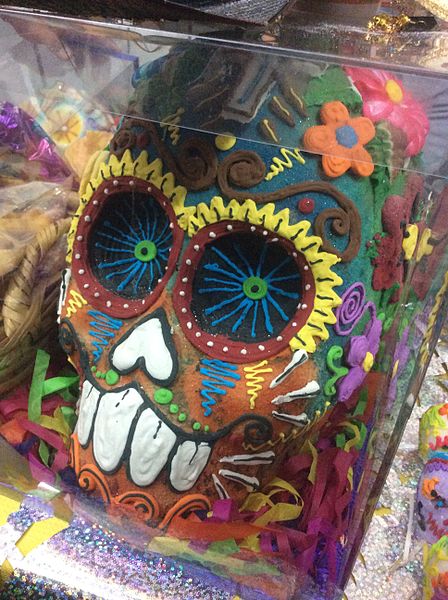José Guadalupe Posada Aguilar was a Mexican political lithographer who used relief printing to produce popular illustrations. His work has influenced numerous Latin American artists and cartoonists because of its satirical acuteness and social engagement. He used skulls, calaveras, and bones to convey political and cultural critiques.
Among his most enduring works is La Calavera Catrina.
Calavera oaxaqueña, 1903, one of his many broadsheets.
Posada's La Calavera Catrina.
Reproduction of the restored Gran calavera eléctrica (Grand electric skull), by Posada 1900–1913
The Calavera Maderista, in the Museo Nacional de Arte, Mexico City
A calavera, in the context of Day of the Dead, is a representation of a human skull or skeleton. The term is often applied to edible or decorative skulls made from either sugar or clay, used in the Mexican celebration of the Day of the Dead and the Roman Catholic holiday All Souls' Day. Calavera can also refer to any artistic representations of skulls or skeletons, such as those in the prints of José Guadalupe Posada, or to gifts or treats in relation to the Day of the Dead. Some widely known calaveras are created with cane sugar, decorated with items such as colored foil, icing, beads, and sometimes objects such as feathers. They range in multiple colors.
A sugar skull, a common gift for children and decoration for the Day of the Dead.
Sugar skulls before decoration.
Sugar skulls offered for sale in Mexico.
Large sugar skull offered for sale in Mexico.








